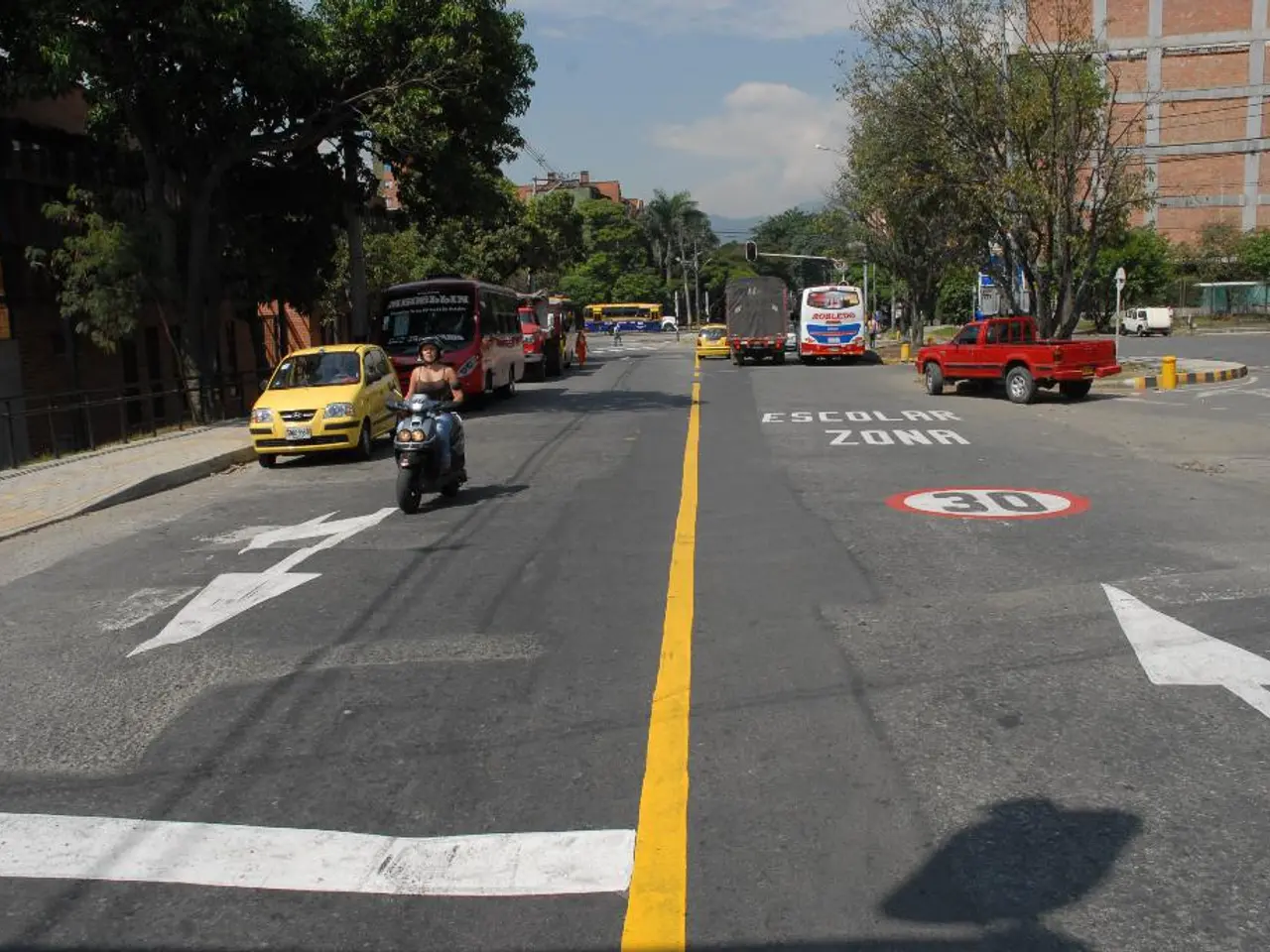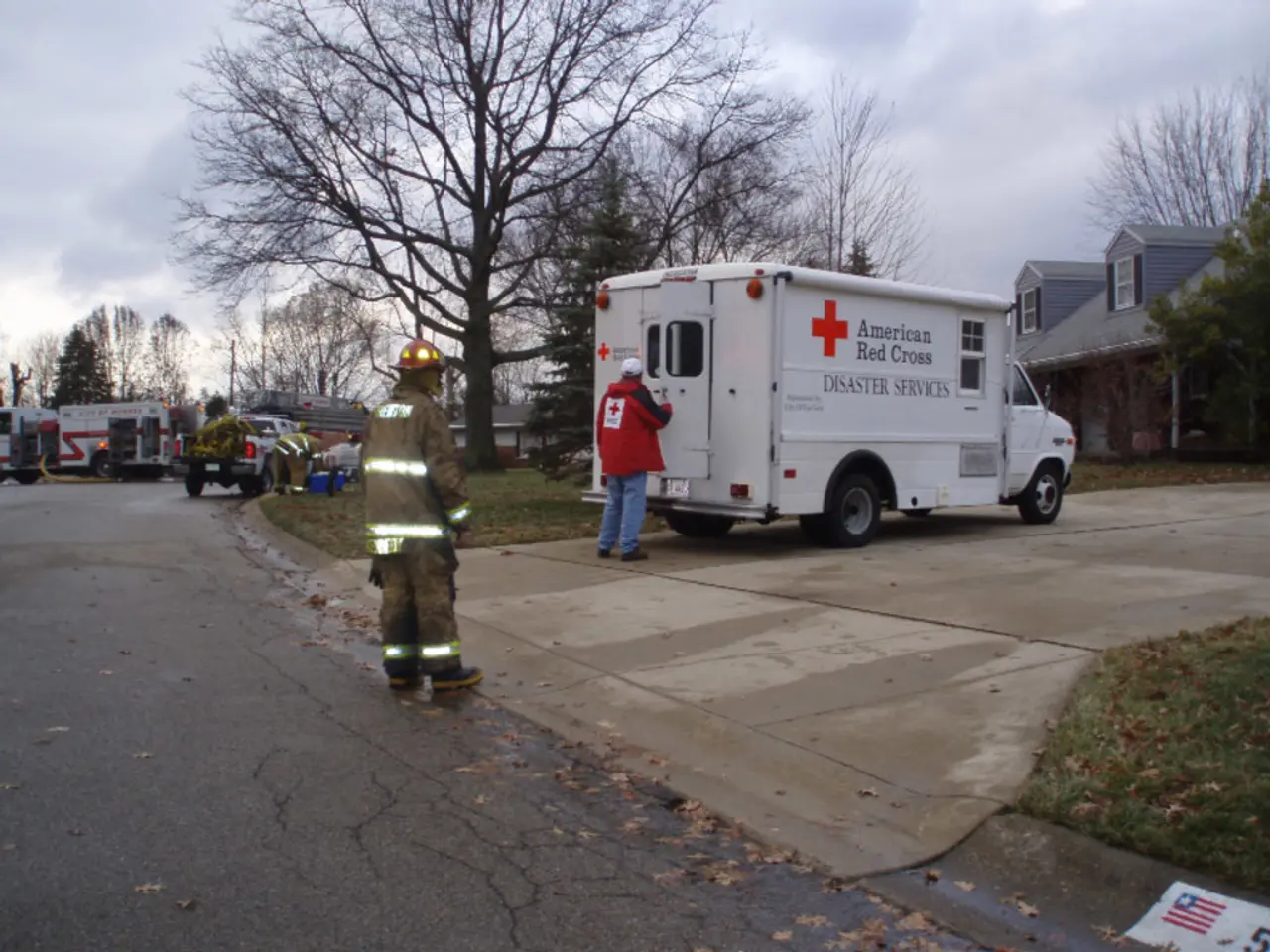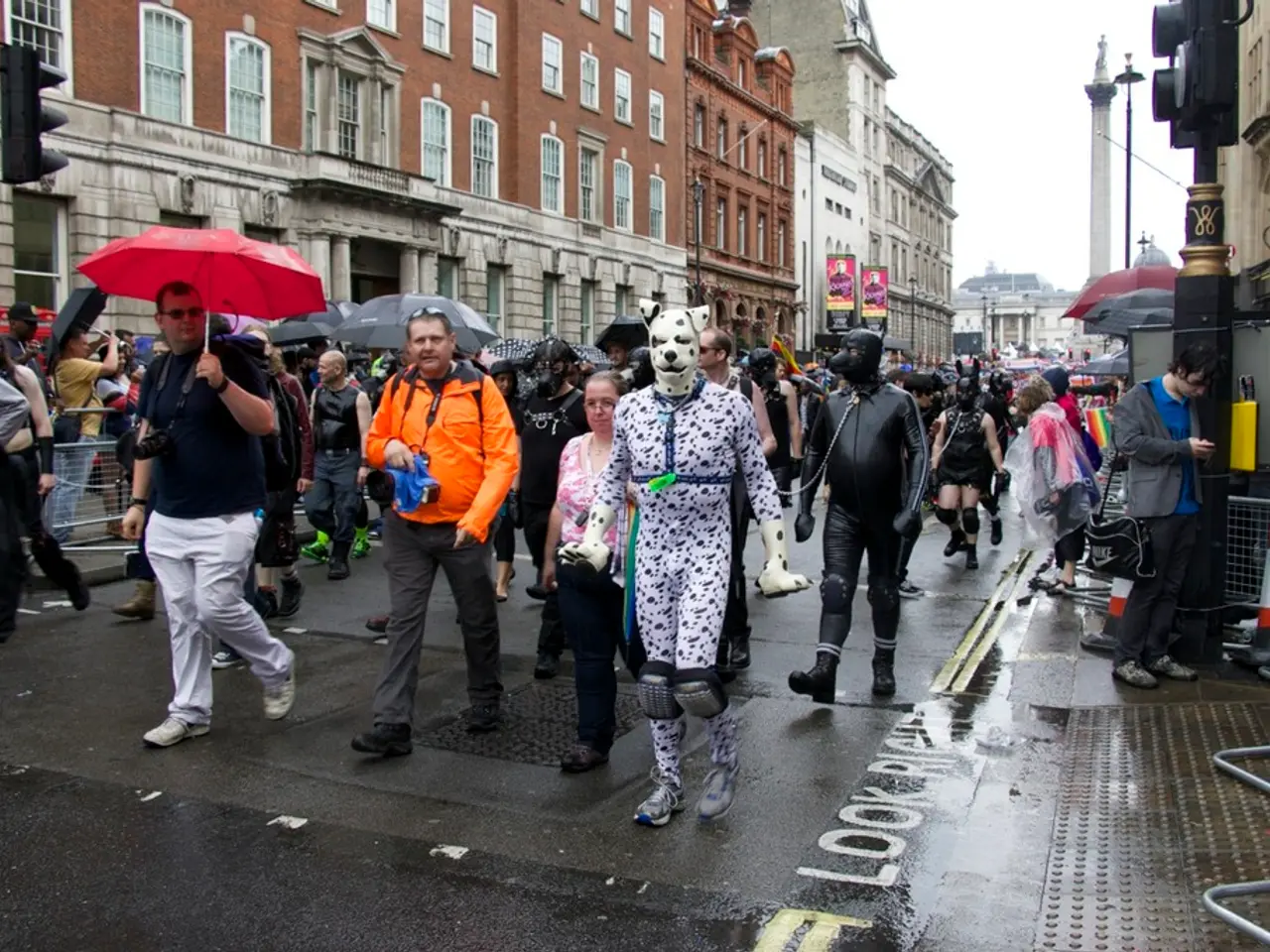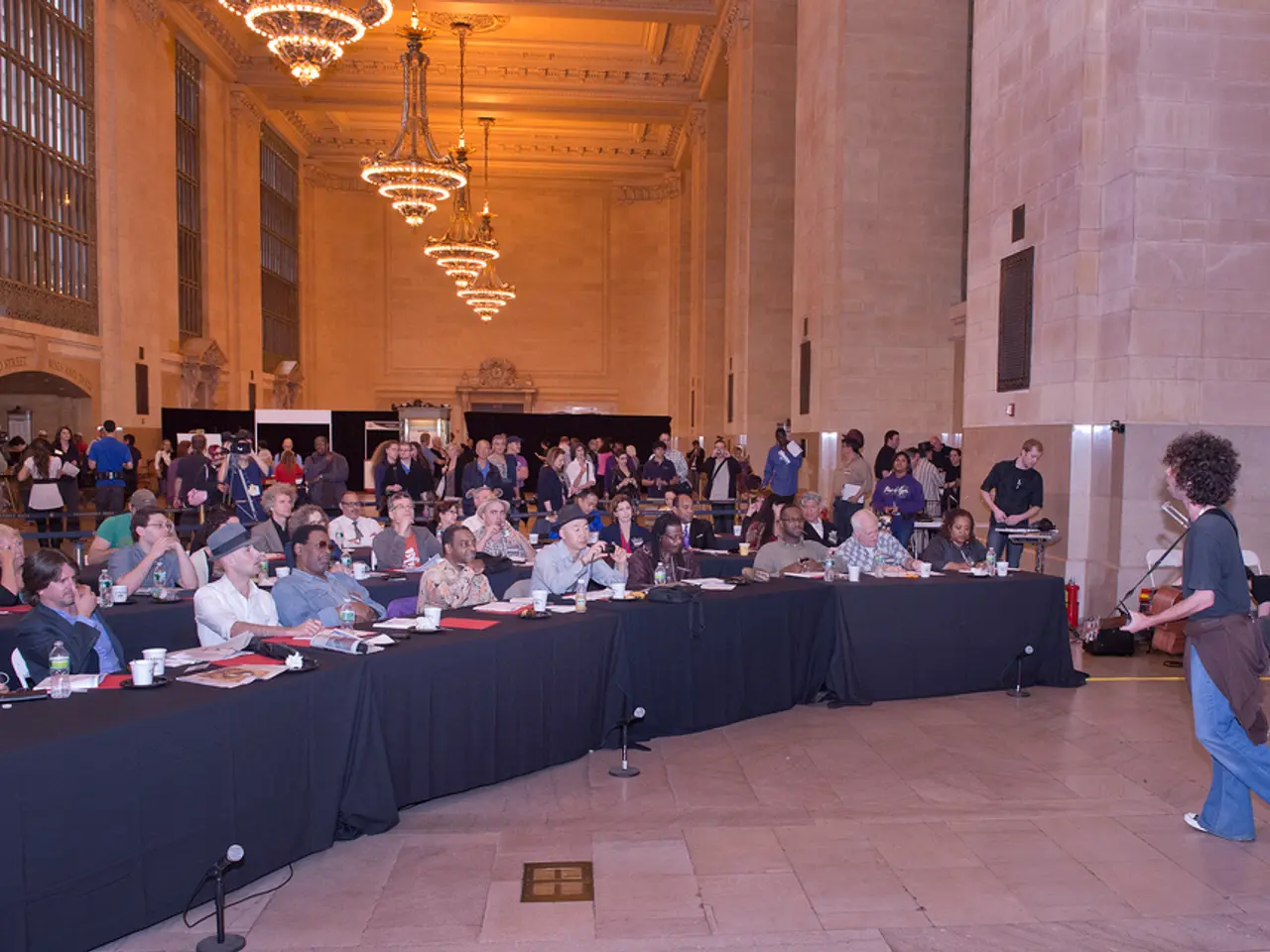Severe storms pose a high flood threat along the I-95 route, hitting at a particularly unfavorable moment
Headline: Dangerous Flash Flooding Threatens Interstate 95 Corridor
Heavy storms are set to hit the mid-Atlantic and Northeast on Thursday, with a Level 3 (out of 4) flood risk along the Interstate 95 corridor[1][3][4]. This threat level indicates numerous flash floods are likely, some of which could threaten life and property in vulnerable urban areas like Philadelphia, Baltimore, and New York City[1][3][4].
The increased risk is due to climate change, as rising global temperatures drive weather toward extremes, resulting in overwhelming rainfall[1][3]. This summer in 2025 has already seen multiple serious flood events in the Northeast, consistent with observed trends of increasing flash flood frequency and severity attributed to climate change-driven alterations in weather patterns[1][3].
Historical flood events show the I-95 corridor is vulnerable, with recent July 2025 flooding causing submerged roads and transit disruptions in cities including New York, Philadelphia, and Washington, D.C.[1][3]. Previous summer floods, such as from Tropical Storm Chantal in the Carolinas, also illustrate the region’s heightened exposure to flood events during the storm season[1].
After a summer of frequent rain and flooding, the water simply has no place to go[2]. Some storms could dump several inches of rain in a few hours[2]. Nearly all of New Jersey is in the risk area for flooding, with parts of Virginia also included[3]. Rainfall across the mid-Atlantic and Northeast has already been above normal this summer, leaving soils saturated and primed for rapid runoff and flooding[3].
Cities often struggle to handle heavy rain as pavement and asphalt keep water from soaking into the ground and instead head for drains that are prone to clogging or simply incapable of handling the volume of water[5]. Drivers are urged to avoid flooded roadways and heed detours and closures[5]. Extreme rainfall rates up to 3 inches per hour could overwhelm areas that typically drain well[3].
Travelers and residents in the I-95 corridor are urged to remain cautious, monitor updates, and avoid flooded roadways during this busy period[1][3][4]. A Level 2 of 4 risk of flash flooding is in place for a broader area extending inland from Virginia Beach up through southern New England[3]. Travel disruptions could be severe, especially during the evening commute[3]. The Weather Prediction Center has warned of very rapid rises on small streams and dangerous flooding in city streets[3].
Residents in the mid-Atlantic should ensure they have reliable ways to receive warnings throughout the day and into Thursday night[4]. Tropical Storm Chantal's flooding rainfall killed at least one person in North Carolina in early July[6]. Subways could see serious flooding, as New York saw earlier this month[5]. Less than two weeks ago, on July 19, the National Weather Service issued a flash flood emergency for the Washington, D.C. area. Dozens of people had to be rescued from floodwaters after heavy rain struck parts of Virginia, Maryland, and Washington, D.C.[7].
Key points:
- Current risk level: Level 3 of 4 flood risk from Washington, D.C. to NYC and parts of Connecticut[1][3][4]
- Expected impacts: Flooded roads, transit disruptions, possible threats to life and property in urban areas[1][3]
- Climate change influence: Intensified rainfall events increasing flash flood frequency/severity along I-95 corridor[1][3]
- Recent similar events: Multiple flash flood events in July 2025, tropical storm flooding earlier in summer[1]
- Geographic extent: Mid-Atlantic to Northeast U.S., including DC, Baltimore, Philadelphia, NYC, southern New England[1][3]
- Travel advice: Stay cautious, avoid flooded roadways, and monitor updates[1][3][4]
[1] https://www.weather.gov/ [2] https://www.nj.com/weather/2021/06/new-jersy-flood-warning-what-you-need-to-know-about-the-rain-forecast-for-thursday.html [3] https://www.baltimorefishbowl.com/stories/flash-flood-watch-for-baltimore-region-as-heavy-rain-expected-thursday/ [4] https://www.npr.org/sections/thetwo-way/2021/06/24/1015469477/heavy-rain-flooding-expected-along-interstate-95-from-baltimore-to-new-york-city [5] https://www.nj.com/weather/2021/06/new-jersey-flood-warning-what-you-need-to-know-about-the-rain-forecast-for-thursday.html [6] https://www.washingtonpost.com/weather/2021/07/02/tropical-storm-chantal-heavy-rain-flooding-north-carolina/ [7] https://www.cbsnews.com/news/flash-flood-emergency-declared-in-washington-dc-area-as-heavy-rain-hits-mid-atlantic/
- Amid the climate-change-induced harsh weather, environmental science experts warn that increased rainfall might overwhelm urban areas like Philadelphia, Baltimore, and New York City, threatening both life and property, as seen through the flash floods in the I-95 corridor.
- To better understand the impact of climate change on weather forecasting, scientists in environmental-science fields will likely study the devastating flash floods on Interstate 95, with particular interest in the role of extreme rainfall events and their frequency in shaping potential future scenarios.








